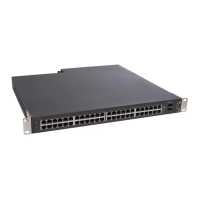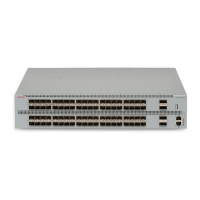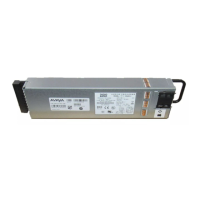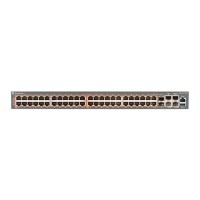Navigation
• Cascade down on page 30
• Cascade up on page 31
• Redundant cascade stacking on page 32
You connect the switches in the stack by the stack connectors. You designate one unit as the
base unit by setting a switch on the back panel.
The stack connector is a component of the Ethernet Routing Switch 5500 Series back panel
and consists of the Unit Select switch, Cascade Down connector, and Cascade Up connector.
The Cascade Down connector connects this switch to the next unit in the stack through a
cascade cable. A connection from this connector must be attached to the Cascade Up
connector of the next switch in the stack. A return cable from another Cascade Down connector
to this unit’s Cascade Up connector completes the stack connection.
Important:
To create a stack connection, order the appropriate Ethernet Routing Switch 5000 Series
cascade cables to ensure fail-safe stacking. An 18 inch cable is provided with the switch.
Ensure you order additional stacking cables of the correct length for a stack of three or more
units -- you require one long cable (stack return cable) to complete the loop in a stack from
the bottom unit to the top unit. See Cascade down on page 30 and Cascade up on
page 31.
The Cascade Up connector provides an attachment point for accepting a cascade cable
connection from another unit in the stack. A return cable from the Cascade Down connector
to the Cascade Up connector on the adjacent unit completes the stack connection.
Figure 2: Stack connector for a 5500 Series switch
Figure 3: Stack connector for a 5600 Series switch
Installation fundamentals
28 Avaya Ethernet Routing Switch 5000 Series Installation December 2010

